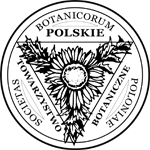The effects of soil conditions and crop types on diversity of weed communities
Abstract
Keywords
Full Text:
PDFReferences
Tryjanowski P, Dajdok Z, Kujawa K, Kałuski T, Mrówczyński M. Threats to biodiversity in farmiland: are results from Western Europe good solutions for Poland? Polish Journal of Agronomy. 2011;7:113–119.
Anyszka Z, Kohut M. Bioróżnorodność zbiorowisk chwastów segetalnych w uprawach wybranych gatunków warzyw. Progress in Plant Protection / Postępy w Ochronie Roślin. 2011;51(3):1219–1223.
Stupnicka-Rodzynkiewicz E, Stępniak K, Dąbkowska T, Łabza T. Różnorodność zbiorowisk chwastów w uprawach zbóż w Beskidach. Fragmenta Agronomica. 2004;22(4):45–54.
Trzcińska-Tacik H. Znaczenie różnorodności gatunkowej chwastów segetalnych. Pamiętnik Puławski. 2003;134:253–262.
Meyer S, Wesche K, Krause B, Leuschner C. Dramatic losses of specialist arable plants in central Germany since the 1950s/60s – a cross-regional analysis. Divers Distrib. 2013;19:1175–1183. http://dx.doi.org/10.1111/ddi.12102
Storkey J, Meyer S, Still KS, Leuschner C. The impact of agricultural intensification and land-use change on the European arable flora. Proc R Soc B. 2012;279(1732):1421–1429. http://dx.doi.org/10.1098/rspb.2011.1686
Pal R. invasive plants threaten segetal weed vegetation of south Hungary. Weed Technol. 2004;18:1314–1318. http://dx.doi.org/10.1614/0890-037X(2004)018[1314:IPTSWV]2.0.CO;2
Pinke Gy, Pál R, Király G, Szendrődi V, Esterházy AM. The occurrence and habitat conditions of Anthoxanthum puelii Lecoq & Lamotte and other Atlantic-Mediterranean weed species in Hungary. Journal of Plant Diseases and Protection. 2006;20:587–596.
Pereira MP, Perez GE, Balbuena ES. European sweet vernal grasses (Anthoxanthum: Poaceae, Pooideae, Aveneae): a morphometric taxonomical approach. Syst Bot. 2007;32(1):43–59. http://dx.doi.org/10.1600/036364407780360201
Lavergne S, Molosky J. Increased genetic variation and evolutionary potential drive the success of invasive grass. Proc Natl Acad Sci USA. 2007;104(10):3883–3888. http://dx.doi.org/10.1073/pnas.0607324104
Pliszko A. A new locality of Solidago ×niederederi Khek (Asteraceae) in Poland. Biodivers Res Conserv. 2013;29:57–62. http://dx.doi.org/10.2478/biorc-2013-0008
Robinson RA, Sutherland WJ. Post-war changes in arable farming and biodiversity in Great Britain. J Appl Ecol. 2002;39:157–176. http://dx.doi.org/10.1046/j.1365-2664.2002.00695.x
Ługowska M, Skrajna T, Skrzyczyńska J, Rzymowska Z. Rare segetal species in the western part of the Middle Vistula River Valley. Monographs of Botanical Gardens. 2015;2:129–138.
Preston CD, Pearman DA, Hall AR. Archaeophytes in Britain. Bot J Linn Soc. 2004;145:257–294. http://dx.doi.org/10.1111/j.1095-8339.2004.00284.x
Pinke G, Korály G, Barina Z, Mesterházy A, Balogh L, Csiky J, et al. Assessment of endangered synantropic plants of Hungary with special attention to arable weeds. Plant Biosyst. 2011; 145(2): 426–435. http://dx.doi.org/10.1080/11263504.2011.563534
Lososová Z, Chytrý M, Cimalová Š, Kropáč Z, Otýpková Z, Pyšek P, et al. Weed vegetation of arable land in Central Europe: gradiens of diversity and species composition. J Veg Sci. 2004;15:415–422. http://dx.doi.org/10.1111/j.1654-1103.2004.tb02279.x
Rzymowska Z, Ługowska M, Skrzyczyńska J. Species diversity of segetal communities in tuber crops and winter and spring cereals. Acta Agrobot. 2013;66(3):95–102. http://dx.doi.org/10.5586/aa.2013.043
Ługowska M, Rzymowska Z. The effect of the application of the exact and approximate methods on values of selected ecological indices. Acta Agrobot. 2014;67(1):39–45. http://dx.doi.org/10.5586/aa.2014.011
Pawlonka Z, Rymuza K, Starczewski K, Bombik A. Biodiversity of segetal weed communities when chlorsulfuron-based weed control is being used on continuous winter wheat. J Plant Prot Res. 2014;54(3):300–305. http://dx.doi.org/10.2478/jppr-2014-0045
Shannon CE. A mathematical theory of communication. Bell System Technical Journal. 1948;27:379–423. http://dx.doi.org/10.1002/j.1538-7305.1948.tb01338.x
Simpson EH. Measurement of diversity. Nature. 1949;163:688. http://dx.doi.org/10.1038/163688a0
Dzwonko Z. Przewodnik do badań fitosocjologicznych. Poznań: Sorus; 2008.
Siciński JT. Agrofitocenozy dorzecza środkowej Warty i Bzury – stan, dynamika i zagrożenia [Habilitation thesis]. Łódź: Wydawnictwo Uniwersytetu Łódzkiego; 2003.
Pyšek P, Jarošík V, Kropáč Z, Chytrý M, Wild J, Tichý L. Effects of abiotic factors on species richness and cover in Central European weed communities. Agriculture, Ecosystems and Environment. 2005;109:1–8. http://dx.doi.org/10.1016/j.agee.2005.02.018
Hulina N. Vrsta Panicum dichotomiflorum Michx. – novikorov u Jugoslaviji. Fragmenta Herbologica Jugoslavica. 1985;14(1–2):113–120.
Wnuk Z. Gatunki chwastów uciążliwe dla rolnictwa na Wyżynie Częstochowskiej. Zeszyty Naukowe Akademii Techniczno-Rolniczej im. Jana i Jędrzeja Śniadeckich w Bydgoszczy. Rolnictwo. 1996;196(38):43–51.
Menne HJ, Wagner J, Schleich-Saidfar C, Hoppe JH, Zange B, Bartels M. Target-site resistance in black-grass (Alopecurus myosuroides Huds.) to ACCase inhibiting herbicides in northern Germany – are there correlating factors in the agronomic production systems? Journal of Plant Diseases and Plant Protection. 2008;21:31–36.
Adamczewski K, Kierzak R. Problem odporności chwastów na herbicydy w Polsce. Progress in Plant Protection / Postępy w Ochronie Roślin. 2011;51(4):1665–1674.
Pawlonka Z, Rymuza K. The effect of chlorosulfuron on weeds in winter wheat. Rom Agric Res. 2014;3:239–243.
Trąba C, Wiater J. Relacja Chenopodium album na rodzaj nawożenia i gatunek rośliny uprawnej. Annales Universitatis Mariae Curie-Skłodowska Lublin, Sectio E. 2007;62(2):23–32.
Malicki L, Podstawka-Chmielewska E, Kwiecińska E. Fitocenozy łanu niektórych roślin na rędzinie w warunkach zróżnicowanej uprawy roli. Fragmenta Agronomica. 2000;17(2):30–44.
Jędruszczak M, Antoszek R. Sposoby uprawy roli a bioróżnorodność zbiorowisk chwastów w monokulturze pszenicy ozimej. Acta Scientiarum Polonorum. Agricultura. 2004;3(2):47–59.
Jastrzębska M, Orzech K, Kostrzewska MK, Waniec M, Nowicki J. Różnorodność chwastów w łanach roślin przy różnym sposobie uprawy roli. Fragmenta Agronomica. 2006;23(4):103–118.
Fried G, Norton LR, Reboud X. Environmental and management factors determining weed species composition and diversity in France. Agriculture, Ecosystems and Environment. 2008;128:68–76. http://dx.doi.org/10.1016/j.agee.2008.05.003
Skrzyczyńska J, Ługowska M. Dominacja gatunków i bioróżnorodność zbiorowisk agrocenoz ziemniaka doliny Środkowej Wisły. Zeszyty Problemowe Postępów Nauk Rolniczych. 2008;530:105–115.
Skrajna T, Gozdowski B, Ługowska M. The transformations of field communities with Illecebrum verticillatum L. (Caryophyllaceae) on the borderlands of its European range (central-eastern Poland). Pol J Ecol. 2014;62(1):3–15. http://dx.doi.org/10.3161/104.062.0102
Cirujeda A, Aibar J, Zaragoza C. Remarkable changes of weed species in Spanish cereal felds from 1976 to 2007. Agron Sustain Dev. 2011;31:675–688. http://dx.doi.org/10.1007/s13593-011-0030-4
Owen MDK, Zelaya A. Herbicide-resistant crops and weed resistance to herbicides. Pest Manag Sci. 2005;61:301–311. http://dx.doi.org/10.1002/ps.1015
Keith BK, Lehnhoff EA, Burns EE, Menalled FD, Dyer WE. Characterisation of Avena fatua populations with resistance to multiple herbicides. Weed Res. 2015;55:621–630. http://dx.doi.org/10.1111/wre.12172
Salonen J, Hyvönen T, Jalli H. Weed flora in organically grown spring cereals in Finland. Agricultural and Food Science. 2001;10:231–242.
José-Maria L, Armengot L, Blanco-Moreno JM, Bassa M, Sans FX. Effects of agricultural intensification on plant diversity in Mediterranean dryland cereal fields. J Appl Ecol. 2010;47:832–840. http://dx.doi.org/10.1111/j.1365-2664.2010.01822.x
Rzymowska Z. Współczesne zmiany we florze i zbiorowiskach segetalnych Podlaskiego Przełomu Bugu [Habilitation thesis]. Siedlce: Wydawnictwo Uniwersytetu Przyrodniczo-Humanistycznego; 2013. (Rozprawa Naukowa – Uniwersytet Przyrodniczo-Humanistyczny w Siedlcach; vol 124).
Skrzyczyńska J, Rzymowska Z, Pawlonka Z. Wpływ systemu gospodarowania na agrocenozy Wysoczyzny Siedleckiej. Fragmenta Agronomica. 2007;24(4):176–183.
Pal RW, Pinke G, Botta-Dukat Z, Campetella G, Barth S, Kalocsai R, et al. Can management intensity be more important than environmental factors? A case study along an extreme elevation gradient from central Italian cereals fields. Plant Biosyst. 2013;147:343–535. http://dx.doi.org/10.1080/11263504.2012.753485
Cimalová Š, Lososová Z. Arable weed vegetation of the northeastern part of the Czech Republic: effects of environmental factors on species composition. Plant Ecol. 2009;203:45–57. http://dx.doi.org/10.1007/s11258-008-9503-1
DOI: https://doi.org/10.5586/aa.1687
|
|
|






